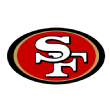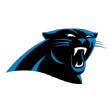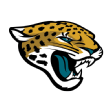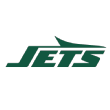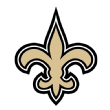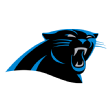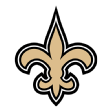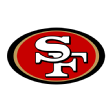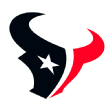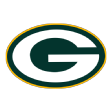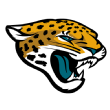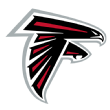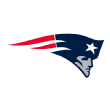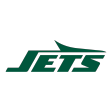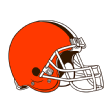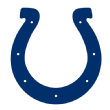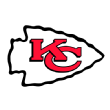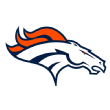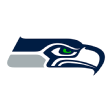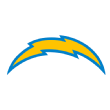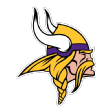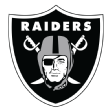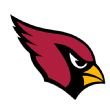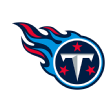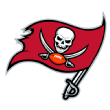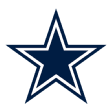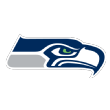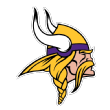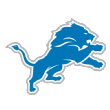Mike Clay's Fantasy Football Playbook for 2022: Draft, trade and win like a pro
ESPN PLUS $ MATERIAL
A new fantasy football season is upon us and -- if you tuned out after February's Super Bowl -- you certainly have a lot of catching up to do.
The 2022 NFL offseason was the most chaotic in league history. We had old QB faces to new places, major coach and front-office movement, several key retirements (including a
Tom Brady retirement and un-retirement) and, of course, an unprecedented number of star wide receiver trades.
The Playbook takes a thorough position-by-position look at the fantasy landscape and offers advice and information that can help you make sound decisions not only on draft day, but in the weeks leading up to Week 1 and throughout the season. The focus will primarily be on average-sized, season-long leagues, but I didn't forget those of you who, like me, are in more nuanced leagues, including dynasty, keeper, superflex and IDP.
If you're a regular reader of my work, first of all, thank you. Second of all, this will seem quite different. Instead of going heavy on data, numbers and charts, this is a strategy piece for both beginners and advanced players that shows you how I apply all that I've learned during an offseason of research. Note that I originally published a version of this article in 2021, but substantial updates have been made for application to 2022.
Bear with me and I'll cover as many bases as possible in a relatively short amount of time.
What to do with your first two draft picks
Our quest to identify the perfect fantasy football strategy evolves year after year, but at the end of the day, finding quality running backs remains the most important goal.
How exactly you find those quality options remains an industry-wide debate. Some will tell you to load up early and often, while others opine that some form of the "Zero-RB" strategy is your ticket to a fantasy title. If you're not familiar, Zero RB is an antifragile drafting philosophy that involves not selecting any running backs until at least the middle portion of your draft, instead loading up on wide receivers (and perhaps an elite tight end) in the first several rounds. Then, when top backs inevitably get injured, your opponents' rosters get worse and you can use your stashed backs and waivers to fill your RB slots, giving you an edge on the field.
What do I think? I think that it depends on whom you're drafting with and how your draft is going. That's a bit of a cop out, but it also follows suit with my general drafting strategy of never (OK, rarely) allowing biases, emotion or need stand in the way of maximizing value.
In the eighth annual MFL10 of Death draft, held in May 2021, I knew I was drafting with some of the sharpest players in the industry and also knew that many of them were on the "Zero-RB" train, which was sure to mean a heavier dose of wide receivers in the first few rounds. This allowed me to grab
Alvin Kamara fifth overall,
Nick Chubb 20th,
D'Andre Swift 29th,
Josh Jacobs 53rd and
Leonard Fournette 125th (The first four were picked within the first five rounds). I picked all five backs later (some way later) than their average draft position (ADP) at the time, so while I was a step behind at receiver, I built myself a sizable edge at running back and had a weekly edge in the flex. I'd rolled with a similar strategy in 2020 (four RBs in the first seven rounds). Did it work? Well, prepare yourself for the first of several not-so-humble brags in this piece: I won the league in 2020 and, despite almost no production from my injury-plagued receiver room, I finished third in 2021.
OK, so that covers leagues against 11 humans who think almost exclusively about fantasy football year-round, but what about a more casual league? ADP suggests that -- as usual -- most leagues will be heavy on running backs in the first few rounds. Recent best-ball ADP data shows running backs as seven of the first 11 picks and 14 of the first 25. In an average 12-team league, roughly 50% of the picks in the first three rounds will be running backs.
So, the question is, do you follow the herd by optimizing your early-season RB situation or zag toward elite WRs and perhaps an elite tight end, like
Travis Kelce or
Mark Andrews? It somewhat depends on where you're drafting in the first round, but the best way to maximize your entire lineup is going to be a mix of both.
If you have the first overall pick, the right answer this season is to select 23-year-old reigning fantasy scoring champion
Jonathan Taylor. After that, it gets tricky. Running backs
Christian McCaffrey,
Austin Ekeler,
Derrick Henry,
Najee Harris,
Dalvin Cook and
Joe Mixon will cost you a first-round pick in most formats and are justifiable in that range. Of course, so are the big three at wide receiver (
Cooper Kupp,
Justin Jefferson, Ja'Marr Chase) and you can easily make a case that all three should be off the board in the first six or seven picks.
I'll get more into the weeds on draft strategy throughout this piece, but here's the bottom line: In an ideal world, I'm getting at least one star RB early (two if the value is there) and then aggressively attacking a deep wide receiver position, while also waiting to pounce on a value at quarterback and tight end in the middle rounds.
State of the Positions
Now that you have a general idea of how to attack the first round or so of your draft, let's check in on the state of each fantasy position.
Quarterback: A "Big 3" followed by a lot of the same
A new fantasy football season is upon us and -- if you tuned out after February's Super Bowl -- you certainly have a lot of catching up to do.
The 2022 NFL offseason was the most chaotic in league history. We had old QB faces to new places, major coach and front-office movement, several key retirements (including a
Tom Brady retirement and un-retirement) and, of course, an unprecedented number of star wide receiver trades.
The Playbook takes a thorough position-by-position look at the fantasy landscape and offers advice and information that can help you make sound decisions not only on draft day, but in the weeks leading up to Week 1 and throughout the season. The focus will primarily be on average-sized, season-long leagues, but I didn't forget those of you who, like me, are in more nuanced leagues, including dynasty, keeper, superflex and IDP.
If you're a regular reader of my work, first of all, thank you. Second of all, this will seem quite different. Instead of going heavy on data, numbers and charts, this is a strategy piece for both beginners and advanced players that shows you how I apply all that I've learned during an offseason of research. Note that I originally published a version of this article in 2021, but substantial updates have been made for application to 2022.
Bear with me and I'll cover as many bases as possible in a relatively short amount of time.
What to do with your first two draft picks
Our quest to identify the perfect fantasy football strategy evolves year after year, but at the end of the day, finding quality running backs remains the most important goal.
How exactly you find those quality options remains an industry-wide debate. Some will tell you to load up early and often, while others opine that some form of the "Zero-RB" strategy is your ticket to a fantasy title. If you're not familiar, Zero RB is an antifragile drafting philosophy that involves not selecting any running backs until at least the middle portion of your draft, instead loading up on wide receivers (and perhaps an elite tight end) in the first several rounds. Then, when top backs inevitably get injured, your opponents' rosters get worse and you can use your stashed backs and waivers to fill your RB slots, giving you an edge on the field.
What do I think? I think that it depends on whom you're drafting with and how your draft is going. That's a bit of a cop out, but it also follows suit with my general drafting strategy of never (OK, rarely) allowing biases, emotion or need stand in the way of maximizing value.
In the eighth annual MFL10 of Death draft, held in May 2021, I knew I was drafting with some of the sharpest players in the industry and also knew that many of them were on the "Zero-RB" train, which was sure to mean a heavier dose of wide receivers in the first few rounds. This allowed me to grab
Alvin Kamara fifth overall,
Nick Chubb 20th,
D'Andre Swift 29th,
Josh Jacobs 53rd and
Leonard Fournette 125th (The first four were picked within the first five rounds). I picked all five backs later (some way later) than their average draft position (ADP) at the time, so while I was a step behind at receiver, I built myself a sizable edge at running back and had a weekly edge in the flex. I'd rolled with a similar strategy in 2020 (four RBs in the first seven rounds). Did it work? Well, prepare yourself for the first of several not-so-humble brags in this piece: I won the league in 2020 and, despite almost no production from my injury-plagued receiver room, I finished third in 2021.
OK, so that covers leagues against 11 humans who think almost exclusively about fantasy football year-round, but what about a more casual league? ADP suggests that -- as usual -- most leagues will be heavy on running backs in the first few rounds. Recent best-ball ADP data shows running backs as seven of the first 11 picks and 14 of the first 25. In an average 12-team league, roughly 50% of the picks in the first three rounds will be running backs.
So, the question is, do you follow the herd by optimizing your early-season RB situation or zag toward elite WRs and perhaps an elite tight end, like
Travis Kelce or
Mark Andrews? It somewhat depends on where you're drafting in the first round, but the best way to maximize your entire lineup is going to be a mix of both.
If you have the first overall pick, the right answer this season is to select 23-year-old reigning fantasy scoring champion
Jonathan Taylor. After that, it gets tricky. Running backs
Christian McCaffrey,
Austin Ekeler,
Derrick Henry,
Najee Harris,
Dalvin Cook and
Joe Mixon will cost you a first-round pick in most formats and are justifiable in that range. Of course, so are the big three at wide receiver (
Cooper Kupp,
Justin Jefferson, Ja'Marr Chase) and you can easily make a case that all three should be off the board in the first six or seven picks.
I'll get more into the weeds on draft strategy throughout this piece, but here's the bottom line: In an ideal world, I'm getting at least one star RB early (two if the value is there) and then aggressively attacking a deep wide receiver position, while also waiting to pounce on a value at quarterback and tight end in the middle rounds.
State of the Positions
Now that you have a general idea of how to attack the first round or so of your draft, let's check in on the state of each fantasy position.
Quarterback: A "Big 3" followed by a lot of the same
I just ran through the overload of intriguing wide receivers available in the middle rounds, and there's little doubt that the position is healthier than ever in terms of talent and depth. However, a ton of standout wide receivers changed places during the offseason (
Davante Adams, Hill,
A.J. Brown,
Marquise Brown, Cooper, Robinson,
JuJu Smith-Schuster, Woods, Kirk, Gage,
DeVante Parker, etc.), which has made it harder than ever to sort players within their various tiers. And "tiers" really is a key word this season because many of these guys are extremely close in value.
Most agree Kupp, Jefferson and Chase fill out the top tier at the position, but the "old faces in new places" fun begins just after with perennial elite WRs Adams (Raiders) and Hill (Dolphins) both changing teams and decent bets for a dip in production. Add
Stefon Diggs, Samuel and
CeeDee Lamb (positioned for a big breakout with Cooper and Cedrick Wilson gone and
Michael Gallup a PUP candidate) to the tier and we have ourselves what feels like a respectable top eight at the position.
It gets really tough from there, though, as we have a massive list of wideouts who could reasonably be ranked anywhere from nine to 35. Can 30-year-old
Keenan Allen repeat as a top-12 fantasy contributor after he was the only receiver over age 28 to finish top 25 last season? Will 29-year-old
Mike Evans continue to defy the odds in the TD department? Can the likes of
Tee Higgins,
Jaylen Waddle and
Mike Williams live up to lofty ADPs despite working as the No. 2 WR on their respective depth charts? Will A.J. Brown's ceiling be accessible in a Hurts-led, run-first scheme? Will DJ Moore's historically poor TD luck turn around? Can
Michael Pittman Jr.,
Terry McLaurin,
Diontae Johnson,
DK Metcalf, Lockett and Cooper bloom with new quarterbacks? Will Godwin and
Michael Thomas be ready for Week 1? Will Jeudy and/or Sutton break out with Russell Wilson under center in Denver? Will any of this year's rookies join the weekly top-30 discussion? Should we trust the likes of St. Brown and Davis at their pricey ADPs after their big splashes in small samples?
There are a lot of tough questions in that paragraph, and that's only a partial list of players you'll be considering in the early-to-middle rounds. The fact is: There's so much uncertainty and depth that you'll be spending late-round picks on players who could easily find themselves in the WR3 mix as early as Week 1.
One warning I'll throw out here is to make sure you're properly identifying viable sleepers. Think about this: over the past five seasons, 42 of the top 50 wide receivers in fantasy PPG (points per game) were selected in the first three rounds of the NFL draft. Pedigree matters.
And it matters for rookies, too.
Of the 310 wide receivers picked in the 2012-21 NFL drafts, only 28 of them finished as a top-35 fantasy WR as rookies. Of those 28, only two (Hill, St. Brown) were picked after the third round. St. Brown was an obvious exception to the rule last season (granted he was useful for only the final month or so of the season), but history tells us to avoid reaching on players with low hit rates and focus instead on high-pedigree players.
Speaking of high-pedigree players, I did some offseason research in order to determine if it was worthwhile to target post-hype, second-year receivers who struggled as rookies. The answer: It depends on just how much they struggled. The magic number seems to be "100," as in, if a wide receiver did not finish top 100 at the position in fantasy points as a rookie, you can all but throw in the towel.
Here's the data: The 132 WRs selected during Rounds 1-3 from 2012 to '21 have accounted for 145 top-30 wide receiver fantasy campaigns during the span. A hefty 48% of those top-30 campaigns were produced by the 22 receivers who were also top 30 as rookies. The number jumps to 67% if we include receivers who were top 50 as rookies, and there are plenty of players who were somewhat productive in Year 1 and went on to fantasy relevance and/or stardom, including Cooks (56th as a rookie), Woods (60th),
Tyler Boyd (65th), Robinson (65th), Godwin (71st), Adams (74th) and
Alshon Jeffery (83rd).
Where it gets interesting is at the bottom of the list. Of the 132 WRs in our sample of receivers (drafted in Rounds 1-3 of the 2012-2021 NFL drafts), 50 finished 100th or worse in wide receiver fantasy points as rookies. Only four went on to have a top-30 season:
Nelson Agholor,
Curtis Samuel, Mike Williams and
DJ Chark Jr. Williams is the biggest success story from the group, and it took him until his fifth season to crack the top 30. In a nutshell, as long as you're somewhat competent as a rookie, you have a shot at success. If you're all but a nonfactor, you're likely a lost cause.
This is especially notable in 2022 because several Day 1 and Day 2 wide receivers from the 2021 draft finished 100th or worse as rookies. This includes
Anthony Schwartz,
Terrace Marshall Jr., D'Wayne Eskridge,
Dyami Brown,
Amari Rodgers and
Tutu Atwell. History tells us that, while maybe one of these guys makes a leap, it's unlikely, so we shouldn't invest much into them. Instead, we can focus high-pedigree rookies or post-hype, second-year players who at least showed some flashes in Year 1. Names that fit that bill (with their current 12-team ADP) include
Kadarius Toney (10th round), Josh Palmer (13th),
Rondale Moore (11th) and
Nico Collins (19th).
In summary: The position is deep with veteran talent and a strong corps of talented young stars, so no need to force things early. When it comes to early-career sleepers, history shows that pedigree matters. NFL scouts do a pretty good job of identifying the high-ceiling guys, so when in doubt, trust their eyes.
Tight end: Stars at the top, value in the middle
Two players stand above the rest at tight end this season. Mark Andrews paced the position in fantasy points in 2021, and Kelce did the prior five seasons. If you want one of these superstars, plan on investing a second-round pick in 12-team leagues.
Kelce and Andrews project to score at a level similar to fringe top-10 wide receivers, and there's a bit of a drop-off from there.
Kyle Pitts is a fun breakout candidate, but he'll cost you a third- or fourth-round pick.
Darren Waller (Raiders added Adams) and
George Kittle (QB change) took a bit of a hit during the offseason and are also a bit costly in the fifth round.
The value seems to be in the middle of the draft, where you can find the likes of Schultz,
T.J. Hockenson,
Dallas Goedert,
Zach Ertz,
Mike Gesicki and
Pat Freiermuth in the seventh-through-11th rounds. This will be hot spot to strike if you're loading up on backs and wideouts early on.
As usual, the position isn't super deep, though you'll find a few late-round breakout candidates in the form of
David Njoku,
Cole Kmet,
Irv Smith Jr. and
Albert Okwuegbunam.
In summary: Grab your tight end when the value is right, and rarely at the expense of a running back or wide receiver you covet early on. You can wait until the middle rounds and still land a solid option.
D/ST: Same as usual
As the infamous quote by this author in the 2021 version of the Playbook goes, "If you're not streamin', you're not strivin'." Stream defenses weekly and profit.
Kicker: Ditto
The last No. 1-scoring kicker to finish top 10 the following season was Matt Bryant in 2017. Seriously. Don't draft a kicker before the last round. In fact, don't pick one at all unless forced to. More on that later.
Draft strategy sawdust
Now that we have a pretty good feel for the 2022 fantasy football draft pool, I have a few additional thoughts on draft strategy.
During my draft, I'm obviously keeping track of whom I've picked and which positions need filling, but I'm never going to pass on an obvious value, even if it's not a position of need. Rarely do I complete a draft in which there wasn't a point at which a player was plummeting well beyond his ADP and I anxiously awaited my opportunity to pounce.
"Passing on value is an obvious recipe for disaster over the long term, but many do it."
An example of this is the 14-team 2021 FSGA Champions league. I picked 11th and opened with Travis Kelce. I took a back at 18th overall (
Antonio Gibson), but then followed with three wide receivers (Mike Evans, Robert Woods, Tee Higgins) before selecting my second RB in the sixth round (
Kareem Hunt). That was a long time to wait for a second back in a 14-team league, but I couldn't pass on that WR value. The next four picks after I took Evans were
Chris Carson,
James Robinson,
Mike Davis and Etienne. Yikes. The next RB picks after Woods -- who was a fringe WR1 before his injury -- were Javonte Williams and Gordon. After Higgins, the next RB picks were Edmonds,
Myles Gaskin and
Trey Sermon. Ouch. Had I forced a second running back earlier, there's no way I would've led the standings all season before falling just short in the title game (nearly my third title in four years ... yes, it still stings).
Passing on value is an obvious recipe for disaster over the long term, but many do it. There are always players, like Cooks,
Adam Thielen, Woods, Boyd or
Jarvis Landry, whom we've seen consistently fall too far in drafts in recent years, not to mention the likes of Eric Decker, Derrick Mason, Pierre Garcon,
Golden Tate, Jeffery and Julian Edelman in seasons prior. These players aren't new or young or particularly exciting, but I've always feasted on boring. Look, you don't need a home run with every single pick in order to win the title. You need to get to the playoffs first and, from there, you need a competent lineup and some luck. In order to achieve both, having a few reliable starters, like Cooks and Woods, is key.
Here's something else to think about: I don't think we fully acknowledge as an industry how different our lineups look in the playoffs than they do entering Week 1. And that's why focusing too much on filling out a perfect lineup on draft day isn't as important as collecting the best talent possible. Where is the line? You'll know it when you see it (aka when guys like Thielen and Cooks are staring you in the face).
I mentioned the 14-team FSGA Champions league earlier, so let me take you back to the 2018 season of that league. Not unlike the aforementioned 2021 campaign, I drafted for value and ended up with a very Zero-RB-friendly squad. My top RBs after the draft were
Marshawn Lynch,
Duke Johnson,
Kerryon Johnson,
Jordan Wilkins,
Devontae Booker and
Latavius Murray. Zero (Zero!) of those backs were on my roster in Week 16, but I won the championship with
Damien Williams,
Jaylen Samuels and Elijah McGuire in my starting lineup. How did I win with that trio? Well, by drafting the best players on the board, I also had
Julio Jones, Keenan Allen, Diggs, Ertz and Mahomes (OK, maybe that one was lucky). Had I forced myself to pick early-round RBs over Ertz and that WR core, I doubt I win the title in what is a very competitive league.
Call me a value-based drafter. Call me conservative. I don't care. I'm happy as long as you can't call me someone who is willfully giving an edge to my opponents.
The draft is complete, but we're just getting started
OK, so your draft is in the rearview mirror. Your team looks great. There's no way you're losing this title. Your work here is done. Right? Wrong.
I'm in a lot of leagues, and most are against industry experts, but I'm also in a few long-running, casual leagues with college friends, family and neighbors. In both situations (industry and family/friends), there are extremely active managers and there are extremely lax managers. Some (like me) are rarely content and are tinkering with trade offers and waivers often in order to get one step closer to a title. Others attack waivers only when needed (injury, bye weeks) and are the strongest bet to commit the most heinous act of all; ignoring trade proposals (more on this later!).
As you might imagine, the active managers win at a much higher rate than the casual ones. Is it possible to simply hit on nearly every draft pick and compete for a league title? Of course. In a high-variance game like fantasy football, it happens.
In fact, that reminds me of the infamous 2007 season in my long-running 16-team, family and friends dynasty league. With zero fantasy football acumen and only Vikings, Patriots and Miami Hurricanes fandom at his disposal (the perfect storm, as it would turn out), my brother Matthew drafted Patriots Tom Brady, Randy Moss, Wes Welker and
Stephen Gostkowski, as well as
Adrian Peterson and Kellen Winslow II. So, yeah, the top-scoring QB, WR and K, as well as the WR11 (Welker) and top-five finishers at RB and TE. Matt never (or, at least, very rarely) checked his team and still started 9-0. The funny part of the story was Week 10 when the Patriots were on a bye. Matt, whose team otherwise averaged 105.3 points per week, didn't check his lineup and lost 69-9. Having relied only on his draft while failing to add complementary producers during the season, he inexplicably went on to lose in the semifinals.
On the other hand, my team (this was before my fantasy analyst days, by the way) started 0-7, leading me to shake up my roster with a few trades. I won six in a row, somehow made the playoffs and went on to win the league title. His team was way better, but (A) it's a weekly game and (B) fantasy points come in all shapes and sizes.
Matthew "lucked" himself into a stacked roster, but post-draft negligence cost him what should've been a surefire league title. How do you avoid a similar fate? Let's take a look at strategies you can use on the trade and waiver market.
On the topic of trading
What better way to kick this section off than another real-life example from one of my long-running dynasty leagues?
Some quick background: It's a 12-team, PPR, non-superflex league in which we can roster 26 players, nine of which are starters (1 QB, 1 RB, 1 WR, 1 TE, 5 flex).
I entered the 2021 offseason with a very good roster and as the defending league champ (another humblebrag), but I also was overloaded at quarterback with Prescott, Herbert,
Ryan Tannehill, Hurts,
Carson Wentz and
Taysom Hill. I knew that I had to unload several of these QBs in order to clear roster spots of unnecessary depth while also adding talent at other positions. Leading up to our rookie draft in June, I made the following trades:
- Traded Chris Carson, Carson Wentz, 2021 rookie pick 2.8 (Dyami Brown) and a 2022 first-round rookie pick (ended up 1.11 -- Christian Watson) for George Kittle and a 2022 third-round rookie pick (ended up 3.2 -- Brian Robinson Jr.).
- Traded Jalen Hurts and 2021 rookie pick 2.12 (Chuba Hubbard) for Henry Ruggs III, Parris Campbell and a 2022 fourth-round rookie pick.
- Traded Ryan Tannehill and a 2022 third-round rookie pick for Brandin Cooks and a 2022 fourth-round rookie pick.
The Hurts deal didn't work out, but the others did, and I came out with a net positive. I still had Herbert and Prescott at QB; Cook, Jacobs and Mixon at RB; Kittle as an edge at TE; and a WR room led by Adams, Hill,
Hunter Renfrow, Chark, Gallup and Landry.
Did I just write all this so I can gloat over my loaded squad? Absolutely. But I also posted it as a lesson:
Team building -- whether it's season-long, dynasty or keeper -- is an ongoing process. You'll rarely be quite this stacked at one position in season-long leagues, especially with smaller rosters, but you will almost always be better at one position than you are another. Many fantasy managers don't maximize their chances at a league title because they are content with their roster and are afraid to shake things up with a trade (more on overcoming this fear later). Especially as bye weeks begin to dry up and your playoffs draw near, it's important to focus on maximizing your starting lineup. If, for example, you're shaky at WR but have four quality RBs, you're just hurting yourself by not shopping around.
Trading in fantasy is one of the most diametric aspects of the game, as most managers seem to either be extremely aggressive or extremely quiet in the department. If you've been playing against the same leaguemates for a long time, I imagine you could place each of them in one of the two categories within seconds of contemplation. Understanding the philosophies, tendencies, skill levels, etc. of your leaguemates is an edge you can use when evaluating the trade market. For example, let's say I was holding the first overall pick in a rookie draft last offseason. I would've had
Ja'Marr Chase all but locked in as my selection. However, along the way, I observe that someone in my league is willing to pay almost any cost for Kyle Pitts. I'd be remiss not to reach out to that manager to see how much he'd offer (this is based on a true story, as in one of my competitive dynasty leagues, a savvy fantasy analyst traded three first-round rookie picks for Pitts).
"The only thing better than a trade proposal alert is a trade accepted alert."
There are countless ways in which knowing your leaguemates can help your cause, and sometimes it's as simple as identifying which ones respond and which ones don't. Or which ones are open to trading and which ones are afraid to make a move with a crippling fear of the possibility that it won't work out. This is very real, and these managers overvalue their players so much that it's not worth your time to even negotiate.
I mentioned that managers are generally either aggressive/active or conservative/quiet on the trade market and I'm, without question, the former. I love trading. I love throwing out offers. I love fielding offers. The only thing better than a trade proposal alert is a trade accepted alert. I throw out trade offers because I enjoy the negotiating process, but as the commissioner of several leagues across multiple sports, I also like to try to inject activity into my leagues. Perhaps my offer gets declined, but now that manager is on the league page and perhaps he counters, makes a waiver move or makes an offer to someone else. An active league is a great league.
One drawback to throwing out trade offers is that you're sure to rub some people the wrong way. The fun of fantasy is that we don't all value players the same way. Unfortunately, it's very easy for managers to become offended -- sometimes infuriated -- if they believe you're trying to rip them off. Sometimes this person will simply ignore the offer, others will reply with an "LOL," and others will lose their cool and go on an expletive-laden tirade in the league forum or group chat. We've all seen it, and I'm asking you right now -- please don't be that person.
Look, if someone keeps sending you "
Gus Edwards and
C.J. Uzomah for Marquise Brown" offers, fine, I get the irritation. But, in most scenarios, even if you don't like the offer, it's not hard to understand where the other person is coming from. Even if I get an offer I'm not even considering, I'm excited by the idea of someone being open for business. If someone is higher than I am on a player on my roster, perhaps I can take advantage with a counteroffer and improve my squad. Also, my first offer is rarely my best offer. I mean, why would it be? That's negotiating 101. Your first offer should be fair and sensible, but it can also be a starting point. How many of you have thrown out an initial trade offer that gets accepted within minutes? Your initial reaction is almost always: "Oh no! What have I done?! Did I just rip myself off?!" We've all been there.
To wrap up on the trading topic, here are a couple tricks I use when making/considering offers:
Five tricks of the trade
- When making an offer, don't just consider what the other manager can do for you. Look closely at their roster and see if there is a void you can fill. Referring back to my trio of QB trades, I identified the manager who rostered Cooks as one with a major void at QB and good depth at WR. It made him a natural trade partner and, sure enough, we worked it out painlessly. If he had Mahomes on his roster, there's no way he's making that deal. Put yourself in the other manager's shoes.
- This next one relates to my first point but focuses more on the "fairness" of your offer. Once you have a trade proposal in mind, flip the script, imagine you're on the other side of it and think about if you'd accept it, consider it or laugh off the offer. If it's the latter, adjust the deal. If you think you'd at least consider it, hit that "send" button, baby!
- Cure crippling trade fear with this simple trick! If someone offers you "Player A" for your "Player B" and you can't decide what to do, imagine you already had "Player A" and were being offered "Player B." Would you accept the deal now? I realize how simple and pointless this might seem, but it's no secret that we're all guilty of overrating our own players. In fact, it's human nature. Specifically, it's a cognitive bias called the endowment effect, in which we value an asset more when it's in our possession than we would if it wasn't. I use the strategy of swapping the players in my head before deciding on pretty much any offer I receive, and I absolutely recommend it, especially if you're afraid of the "accept" button.
- Don't get mad about trade offers. I already talked about this earlier, but I'm reiterating. This drives me nuts. Even if you don't like the offer, just be happy you have someone in your league unafraid to keep the league active by making offers.
- Pick your spots. We've all been there. A top local beat writer tweets that "Player X" is unstoppable in camp and looks like he's in line for a breakout. The initial inclination will almost always be to make a trade offer for that player, but now is not the time. Even if you're buying the hype, wait a week or so until the industry is buzzing about someone else before making the move. On the other hand, if there's a negative report on a player and you're not buying it, that is the perfect opportunity to make an offer.
Making the most of waivers
Waivers can be a tedious process when you manage 16 fantasy football teams like I have the past few years. And yet I still put the time into making claims in every single league.
Why? Because, if I don't, I'm putting myself at a disadvantage. Every single week, there is at least a player or two on waivers who is well worth adding to your roster, if not your starting lineup (one big injury can really shake things up in a hurry). And that goes for the weeks leading up to the season, as well.
One of the ways managers ended up stacked at RB last season was by snatching
Cordarrelle Patterson off waivers. Granted, he fell off down the stretch, but Patterson was one of the most valuable players in fantasy, as he quickly went from undrafted in most leagues to the weekly RB1 radar. Just how valuable was he? A massive
62% of playoff teams across ESPN leagues had Patterson on their roster. That trailed only Kupp's 70% for highest and was more than top-scoring running back Jonathan Taylor's 61%. It's those types of players who get you a gigantic edge in your league, and you're simply playing at a disadvantage if you fail to remain active on waivers.
Besides the common-sense "drop my worst player and add the best available player" waiver strategy, one trick you can use during the season is to drop your kicker and/or defense and instead hold a skill position player for a few extra days. In fact, as someone who often streams both positions, I'll just straight up drop my kicker and D/ST in order to add to the available player pool, which slightly increases my chances of getting who I want off the wire.
For example, let's say I use the Denver Broncos D/ST in Weeks 1-2 against the
Seattle Seahawks and
Houston Texans this season but have no interest in using it against the
San Francisco 49ers,
Las Vegas Raiders,
Indianapolis Colts and
Los Angeles Chargers the following four weeks. I'll cut bait right away on Tuesday. This way, one of my leaguemates might place a claim on the Broncos D/ST instead of a free agent I have on my radar.
And in this scenario, unless there is an available D/ST with a terrific short-term matchup, I'd likely use the roster spot on a skill position player in an uncertain situation heading into the week. Let's say Antonio Gibson hurt his toe two days earlier and is questionable for the upcoming week. Instead of grabbing a dime-a-dozen D/ST, I'll go after Brian Robinson Jr. If Gibson plays, I just cut Robinson for a defense on Sunday. If Gibson is out, I just found myself a potential starter and can cut someone else for a D/ST. I most certainly use this hack more often with my kicker slot, since we know there is a ton of randomness with that position. As long as you remember to check your lineup Sunday morning, the strategy is a no-brainer.
Oh, and I recommend this during the period between your draft and the start of the season, too. Even if forced to draft a kicker and D/ST, I'll just drop them (assuming league rules allow it) and instead grab a high-upside insurance RB or other skill position player to keep rostered until closer to Week 1. There's very little to lose and quite a lot to gain (speaking as someone who dropped
Chris Boswell and added James Robinson in the week leading up to Week 1 back in 2020). By the way, guys like Robinson in 2020 and Patterson in 2021 are not alone: There are players like them available late in drafts or on preseason or early-season waivers every single year. Last year, for example, it cost you little (or in most cases, nothing) to get your hands on Burrow,
Darrel Williams, Dillon, Elijah Mitchell, Renfrow, St. Brown, Kirk,
Dawson Knox and Freiermuth. If you're active, you can butcher your draft and still claw your way to a title.
Tailoring your strategy to your league
A lot of what I just laid out will apply to most of you, but I realize leagues come in all shapes and sizes. In fact, I know this better than most, as none of the 16 teams I managed in 2021 (not to mention dozens of best ball and mock drafts) are exactly the same, with a steady mix of season-long, dynasty, keeper, IDP, super-deep lineups and/or very creative scoring. One league even has punters!
I often ask about how to adjust strategy based on these leagues, so while this isn't the place to get too much into the weeds, here are ways I do just that.
Dynasty leagues
As much as I enjoy a good season-long draft, there is nothing I love more than dynasty leagues. It's the closest you can get to playing GM, as you retain your assets year to year and can make moves at nearly any point on the calendar. There are few better feelings in fantasy than hitting a home run on a rookie pick (just ask those who spent a late first-rounder on Justin Jefferson in 2020 or snagged Ja'Marr Chase last season) or watching one of your sleeper/bench stashes emerge (Renfrow comes to mind from last season).
Oh, and the season never ends. Sure, it stinks to have a bad team, but if you fall out of contention in dynasty, the offseason begins -- at least for you -- and you can immediately begin making trades and waiver moves to set yourself up for future success. As odd as it sounds, sometimes that can be more of an enjoyable ride than a stressful playoff run. And when it eventually leads to a title? There are few better feelings in this game.
The best advice I can give as it pertains to dynasty is to consider perceived value. Dynasty managers love unproven youngsters and first-round draft picks way more than they like established veterans, excluding obvious superstars in their early prime. We get bored with guys who just get the job done year after year, and we are easily distracted by the shiny new toy.
You can and should take advantage of this, and one way to do that in a startup draft is to go extremely young at the expense of winning in the short term. That might seem counterintuitive to what I just said, but bear with me. Aim for 20- to 24-year-old players (adjusting slightly by position) and do your best to fade everyone else. Not everyone you pick will pan out, but enough will and within a year or two, your roster should be peaking while the managers who drafted depreciating assets will be fading. Odds are, your slow start will also allow you another potential superstar via an early pick in the Year 2 rookie draft.
It's at this point that you should have a good, deep roster of young players entering their prime and also an extremely attractive roster on the trade market. Remember my QB-heavy team from earlier? Prior to my 2020 championship run, my roster was talented, young and deep, which allowed me to make a push for one more superstar. I traded McLaurin (albeit reluctantly),
Raheem Mostert and a pair of future second-round picks for Adams. That was fair market value at the time and proved to be a title-winning move.
Speaking of dynasty trades, don't be afraid to trade rookie picks. I swap them often, especially if it lands me an established good player. We tend to overestimate the hit rate of rookies (like it or not, a lot of the rookies you're excited about right now heading into 2022 will bust) and, as long as the player isn't "too old," turning what is essentially a lottery ticket into a weekly starter should be a no-brainer. I'm especially aggressive trading away picks if I expect my team to be good (my picks would, in turn, be late in the round the next year).
Keeper Leagues
Prefer season-long leagues but hate the feeling of not getting to hang on to that amazing, late-round, home run pick you made for multiple years? A keeper league is your new best friend.
It's hard to give detailed advice here, as keeper leagues are known for having all kinds of rules and regulations pertaining to whom you're allowed to keep, how many players you can keep and, in many cases, which picks you must surrender in order to keep players. That said, I get a lot of keeper questions and usually they are incredibly easy to answer. Look, if you're able to keep only a player or three, you're basically playing in a season-long league and should thus keep the players who help you in the short term, adjusting only slightly for age. The best advice in these scenarios is to consider ADP. A realistic question I get is something like, "Should I keep Tyreek Hill for a second-round pick or Justin Herbert for a 12th-round pick?" Obviously Hill is the better asset, but his ADP is in the second round, whereas Herbert's is in the fourth round. In this scenario, you obviously keep Herbert and you'll still get a player similar to Hill (if not Hill himself) when you're on the clock in the second round. I can't stress enough how easy it is to make keeper decisions simply by considering ADP.
By the way, we've always had keeper support within the ESPN Fantasy game, but new in 2022 is
keeper by round support. If you're in a league like the one above, your commissioner can now, for example, make Herbert your 12th-round pick, as opposed to all keepers comprising the first few rounds of your draft.
IDP: Individual Defensive Players
There are some hardcore, serious IDP leagues out there, but I'd guess that most of you who are in a league with defensive players have a fairly normal set of starting slots at the offensive positions and then something in the range of one to six IDP starters. In this scenario (and assuming default scoring), you simply don't need to value defensive players very highly in your draft or on the trade market. Sure, a standout linebacker like
Darius Leonard can give you an edge and has mid-round value, but because IDP scoring is generally a step or two below offense, and because you're likely starting only one or two players at very deep positions, you're going to have plenty of good options, both during the draft and on waivers during the season. Also, casual players know offense significantly better than defense, so identifying and finding good starters will generally be easier. In a nutshell, in leagues with fairly basic IDP settings, you should focus on offense first and worry about IDP later. You can find our
latest 2022 IDP rankings here.
Superflex
Superflex means that your starting lineup includes a flex spot that can be filled with a quarterback. Because the worst starting QB option in a given week is generally going to be projected to outscore the best flex options, this means that each team in your league will ideally be starting two quarterbacks.
Needless to say, QB is significantly more valuable in this format. You should move all quarterbacks up your draft board and plan to roster an extra player or two at the position, as starting two good QBs each week needs to be your primary goal. Whereas top QBs Mahomes, Allen and Herbert are picked in the third- to fifth-round range in one-QB leagues, you can expect all three to be off the board in the first round of superflex leagues.
Knowing that the early QB run will lead to stars at other positions falling in the draft, my goal is almost never to open a superflex draft by picking two consecutive QBs. Instead, I'll aim for one star QB and then grab an elite back or perhaps a wide receiver. Once the initial rush of QBs ends, it tends to quiet down significantly for several rounds, so I simply monitor the situation and eventually pounce on a good second QB when the opportunity presents itself (generally one in the 10-to-18 range). I also make sure to grab either a reliable or upside third QB once the starters begin to dry up. You have to be careful to walk the line of not reaching too early and jeopardizing the rest of your roster while also not getting stuck with a really poor QB situation that handcuffs you all season long. In a perfect world, I have a very good QB1, a reliable QB2 (guys like Cousins and Carr are perfectly reasonable QB2 targets) and someone with upside (think Herbert in 2020 and Burrow or Hurts in 2021. This season, you'll want to keep your eyes on second-year QBs Lawrence, Lance, Fields, Wilson and
Mac Jones).
6-point pass TD
I quickly want to touch on leagues that award six points for a passing TD, as opposed to the standard four points. Honestly, I don't adjust too much for this. As a whole, quarterbacks are more valuable, but there is still sufficient depth at the position, so we don't need to move them significantly up our ranks. The key is bumping up QBs projected to throw a lot of touchdowns at the expense of quarterbacks who do a lot of damage with their legs. The likes of Kyler Murray, Lamar Jackson, Trey Lance and Jalen Hurts take a hit, whereas Tom Brady, Aaron Rodgers, Matthew Stafford and Joe Burrow get a boost. A quick scan over projections and/or historical stats is your friend here.
TE premium
Leagues that award 1.5 or even 2.0 points per reception to tight ends are becoming more popular and have been common in high-stakes leagues for many years. It makes sense when you consider that the No. 5 TE in 1.0 PPR leagues last season (Ertz) scored 181 points, which would've ranked 33rd at wide receiver, 24th at running back and 26th at quarterback.
In a 1.5 PPR TE premium league, Ertz would've scored 213 points, which would've ranked 25th, 14th and 21st, respectively. Perfect? Perhaps not. Better? Of course. In this format, you could make a case for Kelce and Andrews as mid-first-round picks (Andrews outscored all but two, and Kelce all but seven non-QBs in 2021) and the likes of Pitts, Waller and Kittle leap into the second-round discussion. Considering the big drop-off in projected output after the top few tight ends, it makes sense to target an elite player, but it won't be cheap. If you miss out, attacking the next tier or two (Schultz, Hockenson, Goedert, Ertz, Gesicki, Freiermuth) becomes a must. You should also make it a priority to stash a tight end with breakout potential and/or upside on your bench (Okwuegbunam comes to mind).
If you're interested in trying out this format, you can now customize your league scoring by position
in the ESPN fantasy game.
Punters
Just kidding. Or am I? I want punters from bad offenses, so I'm targeting
Michael Dickson (Seahawks),
Johnny Hekker (Panthers) and
Cameron Johnston (Texans).
Final Thoughts
There's not much else I can add here that I haven't said already. When it comes to the draft, know your league settings, have a good set of rankings/tiers, be aware of ADP and don't pass on obvious values. Once the draft concludes, be active. Monitor NFL news and be ready to make savvy waiver moves and trade offers while loading your bench with upside. That might sound overly simplified, but like almost anything else in life, hard work will pay off in the long run.
